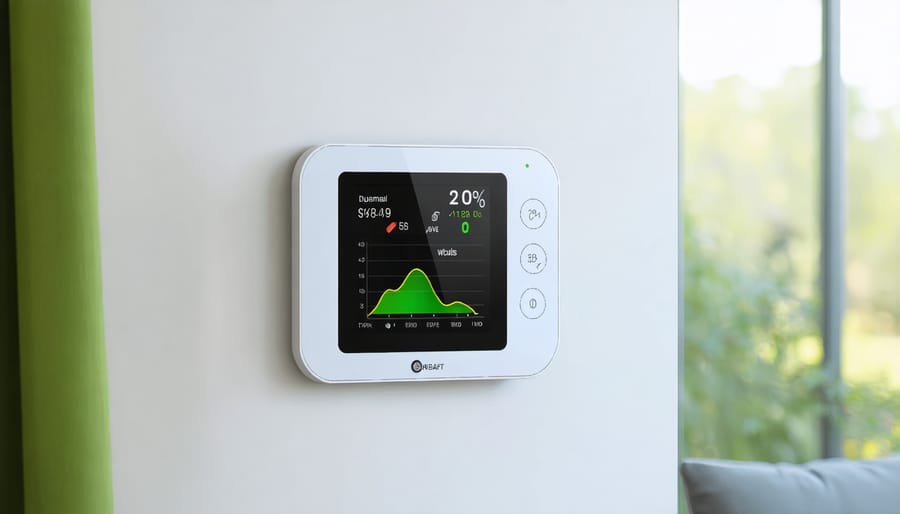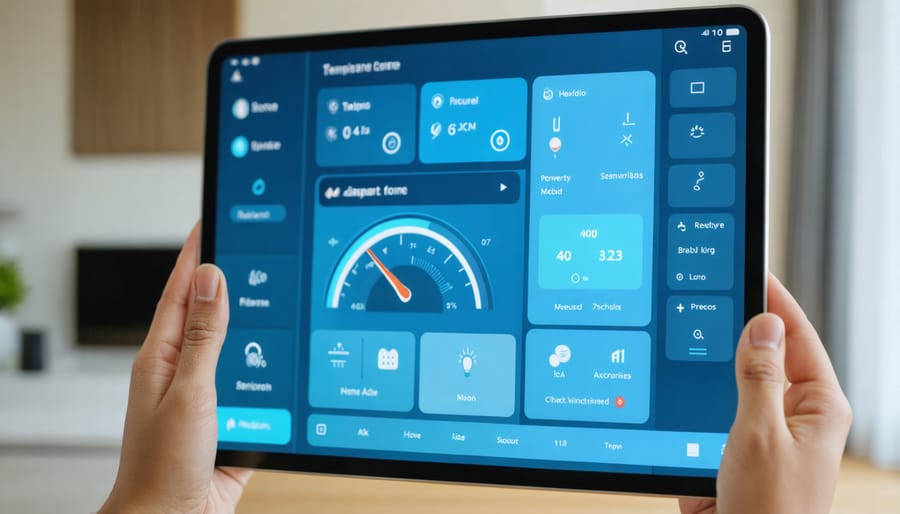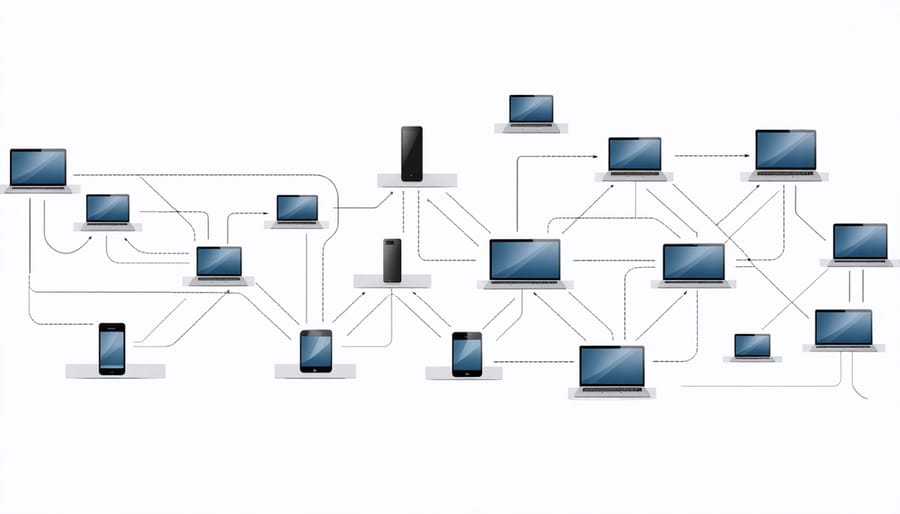Transform your living space into an efficient, automated sanctuary with comprehensive home automation systems that seamlessly connect your devices, enhance security, and reduce energy costs. Modern smart home management puts unprecedented control at your fingertips, whether you’re adjusting your thermostat from work, monitoring security cameras remotely, or creating automated routines that adapt to your lifestyle.
Gone are the days of juggling multiple apps and complicated interfaces. Today’s smart home solutions integrate everything from lighting and climate control to entertainment systems and security features into unified, user-friendly platforms. By centralizing control through voice commands, smartphone apps, or automated schedules, you can create a living environment that anticipates your needs and responds intelligently to your daily routines.
For homeowners ready to embrace the future of residential technology, smart home management offers practical benefits that extend beyond mere convenience. From reducing monthly utility bills through intelligent energy management to enhancing home security with real-time monitoring and alerts, these systems deliver tangible value while simplifying daily life. Whether you’re starting with basic automation or planning a full-scale smart home transformation, the right management system can turn your vision of a connected home into reality.
Essential Components of Smart Home Maintenance
Smart HVAC and Energy Management
Modern smart HVAC solutions are revolutionizing how we manage our home’s climate and energy usage. These intelligent systems do much more than simply heat or cool your space – they learn your preferences, adapt to your schedule, and optimize energy consumption automatically.
Imagine walking into a perfectly temperature-controlled home without touching a single button. Smart thermostats can detect when you’re approaching home through geofencing and adjust the climate accordingly. They also learn your daily routines, automatically lowering the temperature when you’re sleeping or away, potentially saving up to 20% on your energy bills.
Zone-based climate control is another game-changer, allowing you to heat or cool specific rooms rather than the entire house. Combined with smart vents and sensors, these systems ensure optimal comfort while minimizing energy waste. You can easily control everything through your smartphone or voice commands, making adjustments from anywhere.
Many modern systems also include features like humidity control, air quality monitoring, and maintenance alerts. They can notify you when it’s time to change filters or if there’s unusual system behavior, helping prevent costly repairs down the line. Some even integrate with weather forecasts to anticipate and adjust for upcoming temperature changes, ensuring your home stays comfortable while maximizing efficiency.
For the best results, consider pairing your HVAC system with smart blinds and ceiling fans, creating a comprehensive climate management solution that works in harmony to maintain your ideal home environment.

Automated Security and Monitoring
Modern home security has evolved far beyond traditional locks and alarms. Today’s automated security systems offer comprehensive protection while seamlessly integrating with your smart home ecosystem. Starting with a basic home security system setup, you can gradually build a robust network of protective devices.
Smart doorbell cameras serve as your first line of defense, allowing you to see and communicate with visitors whether you’re home or away. Motion sensors strategically placed around entry points provide instant alerts to your smartphone, while smart locks let you control access remotely and track who enters and exits your home.
Indoor cameras with night vision and two-way audio offer peace of mind, especially when checking on pets or children. Many systems now include AI-powered features that can distinguish between normal household activity and potential security threats, reducing false alarms.
Environmental sensors add another layer of protection by monitoring for smoke, carbon monoxide, water leaks, and unusual temperature changes. These sensors work together with your security system to provide comprehensive home monitoring.
The best part? Most modern security systems allow you to customize automation routines. For example, you can set outdoor lights to activate when motion is detected, or have cameras begin recording when a door sensor is triggered. This creates a responsive security environment that adapts to your needs while keeping your home safe around the clock.

Setting Up Your Smart Home Maintenance Hub
Choosing Compatible Devices
When building your smart home ecosystem, compatibility is key to ensuring all your devices work together seamlessly. Start by choosing a primary platform or hub that matches your preferred ecosystem – popular options include Amazon Alexa, Google Home, or Apple HomeKit. This decision will influence your future device purchases, so consider which platform you’re already most comfortable using.
Before purchasing any smart device, check its compatibility with your chosen platform and existing devices. Look for products that support standard protocols like Zigbee, Z-Wave, or Wi-Fi, as these offer the most flexibility and future-proofing. Many manufacturers now list compatible platforms right on the packaging or in their online descriptions.
Consider creating a device ecosystem within the same brand family when possible. For example, if you start with Philips Hue lights, their other lighting products will naturally work together. However, don’t feel locked into one brand – many modern smart devices are designed to work across multiple platforms.
Pay attention to your home’s existing infrastructure. If you have an older router, you might need to upgrade to handle multiple smart devices. Also, check if the device requires a separate hub or bridge – this could affect both your budget and setup complexity.
Remember to read recent user reviews and check for regular firmware updates, as these indicate the manufacturer’s commitment to maintaining and improving their products’ compatibility over time.
Creating Automated Maintenance Schedules
Setting up automated maintenance schedules for your smart home doesn’t have to be complicated. With a few simple steps, you can create a reliable system that keeps your home running smoothly without constant supervision.
Start by listing all your smart devices and their maintenance requirements. Common items include HVAC filters, water filtration systems, smoke detectors, and security cameras. Create a digital spreadsheet or use a smart home management app to track these items.
Next, set up notifications through your smart home hub. Most modern systems like Google Home or Amazon Alexa allow you to create custom reminders. For example, schedule quarterly reminders to check smoke detector batteries or monthly alerts to clean security camera lenses.
Pro tip: Link your maintenance schedule to seasonal changes. Program your system to remind you about:
– Spring: HVAC maintenance before summer
– Summer: Smart sprinkler system checks
– Fall: Thermostat programming updates
– Winter: Smart doorbell camera cleaning
Take advantage of your smart home’s automation features by setting up automatic orders for replaceable items like air filters. Many smart devices can even monitor their own performance and alert you when maintenance is needed.
Remember to regularly review and adjust your maintenance schedule based on your home’s specific needs. What works in summer might need tweaking for winter, and newer devices might require different care routines than older ones.
Integration and Connectivity Solutions
Getting your smart devices to work together seamlessly is crucial for a truly automated home experience. Start by choosing devices that support common protocols like Wi-Fi, Zigbee, or Z-Wave. These standardized communication methods ensure better compatibility between different brands and products.
Consider using a central hub or controller that can manage multiple devices simultaneously. Popular options include Samsung SmartThings, Apple HomeKit, or Amazon Alexa hubs. These platforms act as translators between different smart devices, allowing them to communicate effectively.
To ensure reliable connectivity, position your Wi-Fi router centrally in your home and consider using mesh networks or Wi-Fi extenders to eliminate dead zones. Keep your router’s firmware updated and maintain a strong internet connection – this is the backbone of your smart home system.
Create device groups based on rooms or functions to streamline your automation routines. For example, group your living room lights, TV, and thermostat together for one-touch evening comfort settings. Regular software updates for all your devices are essential for maintaining secure and stable connections.
If you’re experiencing connectivity issues, try these quick fixes:
– Reset problematic devices
– Check for interference from nearby electronics
– Ensure devices aren’t too far from your hub
– Verify that all devices are on the same network
– Update device firmware regularly
Remember to maintain a backup plan for critical functions, like having manual controls available for essential systems in case of network issues.


Cost-Saving Benefits and ROI
Energy Efficiency Gains
Smart home management systems can significantly reduce energy costs through intelligent automation and real-time monitoring. A smart thermostat alone can save homeowners 10-15% on heating and cooling bills by learning household patterns and adjusting temperatures automatically.
Motion sensors paired with smart lighting can cut electricity usage by ensuring lights are only on when rooms are occupied. Many users report savings of up to 25% on their lighting costs after implementing these systems. Smart plugs help eliminate phantom energy drain from electronics in standby mode, which can account for up to 10% of your home’s energy consumption.
Smart window blinds work with your HVAC system to maximize natural heating and cooling, while automated water management systems can detect leaks and monitor usage patterns, potentially saving hundreds of gallons monthly. Real-world examples show that homes using comprehensive smart management systems often see overall energy reductions of 20-30% annually.
For maximum efficiency, consider connecting these systems to a central hub that provides detailed energy usage reports. This allows you to identify peak consumption periods and adjust your habits accordingly. Many homeowners find that the initial investment in smart technology pays for itself within 12-18 months through reduced utility bills.
Preventive Maintenance Benefits
Smart home systems are revolutionizing how we maintain our homes by catching small issues before they become major headaches. Through a network of sensors and intelligent monitoring, these systems act like a vigilant caretaker, constantly checking your home’s vital signs.
Imagine getting a notification that your water heater’s pressure is slightly off or that your HVAC system’s efficiency has dropped by 15%. These early warnings allow you to address problems while they’re still minor, potentially saving thousands in emergency repairs. Smart systems can detect everything from unusual power consumption patterns to small water leaks, making them invaluable for sustainable home management practices and preventive maintenance.
The real magic happens in the data analysis. Your smart home system learns your household’s patterns over time, making it increasingly accurate at predicting when maintenance is needed. For example, it can remind you to change air filters based on actual usage rather than just calendar dates, or alert you to clean your gutters before the rainy season begins.
By implementing these preventive measures, homeowners typically save 20-30% on repair costs annually. Plus, the peace of mind knowing your home is constantly monitored is invaluable. Regular maintenance alerts help extend the lifespan of your appliances and systems, ensuring they operate at peak efficiency for years to come.
Troubleshooting and Maintenance Tips
Regular System Updates
Keeping your smart home systems up-to-date is crucial for optimal performance and security. Just like your smartphone, smart home devices receive regular updates that enhance functionality, patch security vulnerabilities, and add new features. Set aside time each month to check for pending updates across all your devices.
Enable automatic updates whenever possible – this ensures your devices stay current without requiring constant attention. However, some devices may need manual updates, so create a simple reminder system using your phone’s calendar or a home management app.
Before updating any device, make sure you have a stable internet connection and adequate battery power or backup power supply. It’s best to perform updates during off-peak hours when you’re not actively using the devices. This way, if something goes wrong, it won’t disrupt your daily routine.
Keep a digital log of update histories for each device. This helps track when updates were performed and identifies any potential issues that might arise after an update. If you notice problems after an update, you can quickly rollback to the previous version or troubleshoot more effectively.
Remember to regularly check your hub or main controller’s firmware – it’s the brain of your smart home system. Manufacturers often release critical security patches, so staying current is essential for protecting your home network and personal data.
A well-maintained smart home is a secure and efficient one. Make system updates part of your regular home maintenance routine, just like changing air filters or checking smoke detectors.
Network Optimization
A robust network connection is the backbone of any smart home system. To keep your devices running smoothly, start by positioning your router in a central location, away from metal objects and thick walls that could interfere with the signal. Consider using mesh Wi-Fi systems if you have a larger home or multiple floors – they’re excellent for eliminating dead zones and maintaining consistent coverage throughout your space.
Create separate networks for your smart devices and regular internet usage. This not only improves security but also prevents your smart home devices from competing with bandwidth-heavy activities like streaming or gaming. Most modern routers offer guest network features that work perfectly for this purpose.
Regular network maintenance goes a long way. Update your router’s firmware when available, and periodically check your network speeds using free online speed tests. If you notice consistent slowdowns, try rebooting your router monthly – it’s a simple fix that often works wonders.
For optimal performance, limit the number of devices connected to each network band. Most smart home devices work well on the 2.4GHz band, while you can reserve the faster 5GHz band for activities requiring more speed. Remember to change your Wi-Fi password every few months and always use WPA3 security when available.
If you’re experiencing persistent connectivity issues, consider investing in Wi-Fi extenders or powerline adapters to boost your signal in problem areas. These affordable solutions can significantly improve your smart home’s reliability without requiring a complete network overhaul.
Device Maintenance Schedule
Keeping your smart home devices in top condition doesn’t have to be complicated. Here’s a practical maintenance schedule to help you stay on track:
Monthly Tasks:
– Check and clean smart camera lenses with a microfiber cloth
– Test all motion sensors and adjust sensitivity if needed
– Update device firmware and apps
– Verify battery levels in wireless devices
– Clean touchscreen displays and control panels
Quarterly Tasks:
– Test smart smoke and carbon monoxide detectors
– Clean smart thermostat sensors
– Check all device connections and power supplies
– Dust smart speakers and voice assistants
– Verify smart lock mechanisms and lubricate if necessary
Bi-Annual Tasks:
– Recalibrate smart thermostats
– Check and tighten any loose mounting hardware
– Test backup batteries in critical devices
– Review and update automation schedules
– Clean or replace smart air purifier filters
Annual Tasks:
– Professional inspection of smart security systems
– Deep clean outdoor cameras and weather sensors
– Test whole-house surge protectors
– Update emergency contact information
– Review and upgrade device passwords
Pro Tip: Create calendar reminders for these maintenance tasks, and keep a digital log of when you perform each one. This helps track device performance and identify potential issues before they become problems. Remember to always consult your device manuals for specific maintenance requirements, as some smart devices may need more frequent attention based on usage and environmental factors.
Transforming your home into a smart living space is more than just a trend – it’s an investment in comfort, efficiency, and peace of mind. As we’ve explored throughout this guide, smart home management brings numerous benefits that can significantly enhance your daily life. From reducing energy bills through automated climate control to strengthening security with smart cameras and locks, these technologies work together seamlessly to create a more convenient and sustainable living environment.
The beauty of smart home technology lies in its flexibility and scalability. You can start small with a few essential devices and gradually expand your system as your needs and comfort level grow. Whether you’re tech-savvy or just beginning your smart home journey, today’s user-friendly interfaces and straightforward setup processes make it easier than ever to get started.
Remember that the initial investment in smart home devices often pays for itself through energy savings, increased property value, and enhanced security. Plus, with the continuous advancement of technology, these systems are becoming more affordable and capable with each passing year.
Don’t let the prospect of managing multiple devices intimidate you. Modern smart home hubs and integrated systems have made control and maintenance surprisingly straightforward. With voice commands, smartphone apps, and automated routines, you can effortlessly orchestrate your entire home environment to match your lifestyle.
Take the first step toward smarter living today. Start with one area that matters most to you – whether it’s security, energy efficiency, or convenience – and experience firsthand how smart home technology can transform your daily routine. The future of home management is here, and it’s more accessible than ever before.
